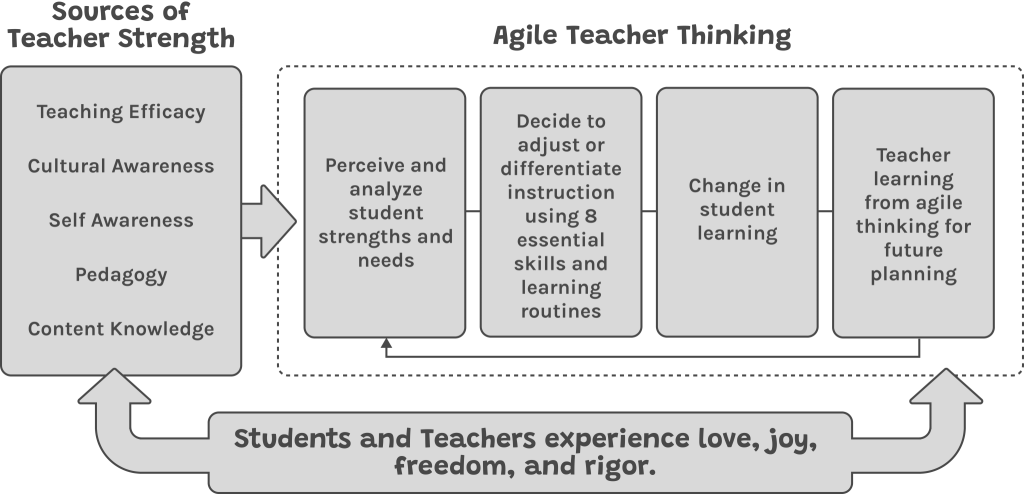Teachers are often given what to teach – a curriculum and evidence-based interventions for students needing greater support. Teachers are also given how to teach – high leverage practices (HLPs) for special and general educators and approaches to teaching (e.g. project based learning). However, the strategic thinking required to implement the curriculum and teaching approach is rarely taught in teacher professional development. We call this thinking work – agile thinking.
Agile thinking is required for teachers to respond to student learning as it unfolds during lessons and to adjust learning experiences to meet student learning needs within time and resource constraints.

Agile thinking enables teacher to be RAP-PID:
Responsive – reflect and adjust to learners,
Accurate – seeking reliable information
Present – aware and in the moment with students,
Precise – perceive and analyze with criticality,
Imaginative – continuously envisions possibilities, and
Deliberate – act with purpose and intentions.
Our model of Agile Teacher Thinking illustrates how teachers draw on sources of strength to accomplish agile teacher thinking. Agile Teacher Thinking is launched by perceptions of student learning (i.e. If (all, some, individual) students (have or need). Teachers use the elements of learning routines and 8 essential teaching skills, along with various teaching approaches and programs in response to student learning. Most importantly teachers and students reflect on changes in student responses or work to determine the impact of teaching on student learning. Teachers reflect on how teaching impacts student learning to plan future lessons.


